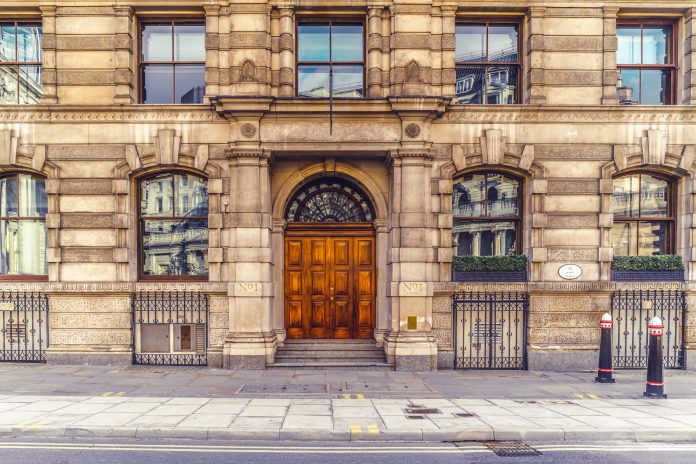Retrofitting the UK’s historic buildings could reduce carbon emissions by five percent a year, and generate £35bn of economic output in the economy, according to a new report commissioned by the National Trust, Peabody, Historic England, The Crown Estate and Grosvenor
Organisations have joined together to highlight the social, environmental, and economic opportunities offered by having a workforce with the necessary skills and training to retrofit the UK’s historic buildings and ensure a net zero future.
The report will be officially launched on 7 March, and will highlight the benefits of retrofitting the UK’s historic buildings, and the vital contribution that this can make in the fight against climate change.
More than 105,000 workers needed per year to meet the 2050 net zero target
According to the report, more than 105,000 new construction workers will be needed to work on decarbonising the UK’s historic buildings every year for the next three decades for the UK to meet its 2050 net zero target.
Buildings are responsible for around one fifth of the nation’s greenhouse gas emissions. Retrofitting can aid in lowering energy emissions, and can also prolong the life of an older building.
It avoids the carbon emissions associated with demolishing and building new – particularly the large amount of carbon emissions from cement and steel produced by construction.
Retrofitting the UK’s historic buildings will require specialist skills
In order to retrofit the UK’s historic buildings, specialist skills and training will be needed to deliver the UK’s 2050 net zero target.
Plumbers will need to be able to work with heat pumps and hydrogen boilers, and many existing workers will need to be taught additional specialist skills to ensure heritage characteristics are protected and the work undertaken is appropriate to the type of construction.
UK could face a backlog of retrofit projects in the future if the skills shortage is not addressed
The construction industry has faced a national skills shortage in recent years, caused by the knock on effects of Covid-19, Brexit, and an ageing workforce.
On estimate, 100,000 people currently work on historic buildings in the UK, but up to 105,000 new workers, including 14,500 more electricians and 14,300 more plumbers, will be needed each year until 2050 to focus solely on upgrading buildings built before 1919
According to the report, if the skills shortage is not addressed, the UK could face a backlog of retrofit projects in the 2030’s and will risk losing some of its cultural if these building become uninhabitable.
Tackling greenhouse emissions and protecting the UK’s built heritage
Tor Burrows, Grosvenor’s executive director of Sustainability and Innovation, commented: “As Chris Skidmore’s net zero review identified, we need to grasp the historic opportunity tackling climate change offers us.
“The Environmental Audit Committee has called for a national mobilisation on energy efficiency. We believe this captures the urgency of the task. The UK needs a long-term national retrofit strategy, led by the government, positively bringing together training, funding, and standards to sensitively decarbonise our historic buildings.
“Only then can we truly seize this opportunity to tackle a significant source of greenhouse emissions while protecting our much-loved built heritage.
“The construction industry, businesses and training providers need support to scale up. That’s why we’re asking the government to work with us on creating a national retrofit strategy that sets out a clear path for upskilling the current workforce while bringing in a whole new generation.
“Much of this will need to take place at a local level, with employers, local authorities and civic society helping to develop area-based retrofit programmes and training initiatives.”
The report urges the government to make the apprenticeship levy more flexible
The report encourages the government to make the apprenticeship levy more flexible, allowing unspent funds to be channelled into training more people in the heritage retrofit field.
Grosvenor has pledged to transfer up to £50,000 of its levy each year to smaller businesses looking to bring new skills to their workforce. Levy money could also be used to fund six to eight-week boot camps for people interested in joining the sector, or to help existing workers acquire the specialist skills needed.
£3.3bn of unused Apprenticeship Levy was returned to the Treasury between May 2019 and July 2022.
‘Reducing household energy bills and improving health and wellbeing’
Lord Kerslake, chair of Peabody, added: “The benefits of prioritising our historic buildings are economic as well as environmental and social. They are an important source of prosperity and growth, with the heritage sector directly contributing £14.7bn to the economy in 2019.
“Making these buildings energy efficient will stimulate spending in the construction industry, support around 290,000 jobs in supply chains and boost heritage-related tourism and hospitality.
“And where needed, making older homes more energy efficient will transform the lives of the people who live and work in them, reducing household energy bills and improving health and wellbeing.”
Historic buildings are one of the key pillars of the government’s Levelling Up strategy
Hilary McGrady, director general of the National Trust, concluded: “From Georgian town houses to the mills and factories that kick-started our industrial revolution, our historic buildings play a significant role in society, connecting people and places – one of the key pillars of the government’s Levelling Up strategy.
“The stewardship of our built heritage is in our hands, and we must ensure we prepare it for the challenges of climate change. It’s a significant task, but it’s one we can achieve through co-ordinated action. But that action must be taken now.”














